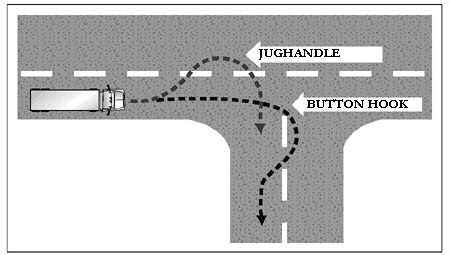True/False
Indicate whether the
statement is true or false.
|
|
|
1.
|
The minimum tread depth required for all tires other than front tires is 2/32 of
an inch.
|
|
|
2.
|
In order to test hydraulic brakes for leaks, you pump the brake pedal three (3)
times, then apply firm pressure to the pedal and hold for five (5) seconds.
|
|
|
3.
|
You may bring a “vehicle inspection memory aid” with you to take the
state CDL vehicle inspection test.
|
|
|
4.
|
True or false: the following is the order of the seven (7) step vehicle
inspection process:
Step 1: Vehicle overview
Step
2: Check engine compartment
Step 3: Start
engine and inspect inside of cab
Step 4: Turn off engine and check
lights
Step 5: Do a walk-around inspection
Step
6: Check signal lights
Step 7: Start engine
and check brake system
|
|
|
5.
|
When backing, always back toward the driver’s side whenever
possible.
|
|
|
6.
|
Stopping is not always the safest thing to do in an emergency.
|
|
|
7.
|
If a tire blows out while you are driving, stay off the brake until you have
slowed down.
|
|
|
8.
|
If your vehicle runs onto the shoulder of the road, you should try and stop
before returning back onto the highway.
|
|
|
9.
|
The A:B:C fire extinguisher will work on electrical fires, burning liquids and
wood, paper and cloth.
|
|
|
10.
|
Driving too fast for conditions causes most front wheel skids.
|
Multiple Choice
Identify the
choice that best completes the statement or answers the question.
|
|
|
11.
|
When you are broken down, if a hill or curve prevents other drivers from being
able to see you, move the rearmost warning triangle back ______ feet.
|
|
|
12.
|
Which of the following statements about using your horn is true:
a. | Use your horn whenever you are in a traffic jam. | c. | When using your horn, always make
it last for a long time. | b. | Use a horn only when necessary because it can
startle other drivers. | d. | A
horn is useless. |
|
|
|
13.
|
Hydroplaning occurs when ____________ collects on the road and tires lose
contact with the road surface.
a. | Water or slush. | c. | Gravel. | b. | Dirt. | d. | Heat. |
|
|
|
14.
|
Which of the following are true about hydroplaning?
a. | Hydroplaning can occur at low speeds. | c. | Low tire pressure makes
hydroplaning more likely. | b. | Hydroplaning is more likely when tire pressure
is low. | d. | All of the
above. |
|
|
|
15.
|
Which of the following are true:
a. | On wet roads, reduce speed by one third. | c. | On an icy surface, reduce speed to
a crawl and stop as soon as it is safe. | b. | On packed snow, reduce speed by one half or
more. | d. | All of the
above. |
|
|
|
16.
|
You are driving a 40 foot vehicle at 35 mph. The road is dry and
clear. How many seconds of space should you keep in front of your vehicle?
|
|
|
17.
|
Federal law states that it is illegal to have a CDL:
a. | For two or more types of trucks at a time. | c. | From more than one
state. | b. | More than one year old. | d. | If you have less that 5 years of experience. |
|
|
|
18.
|
Which of the following are true statements about the space needed for a truck to
cross traffic at an intersection?
a. | Be aware of the size and weight of your vehicle. | c. | Allow more space to cross traffic
when you have a heavy load. | b. | You need a larger gap in traffic to cross an
intersection in a truck than in a car. | d. | All of the above. |
|
|
|
19.
|
What is the correct method for making a right hand turn if you cannot make the
turn without crossing into another lane?  a. | Button hook | c. | Both are correct | b. | Jughandle | d. | Neither are
correct |
|
|
|
20.
|
Which of the following are considered road hazards?
a. | Work zones | c. | Off-ramps and on-ramps | b. | Objects on the
road | d. | All of the
above |
|